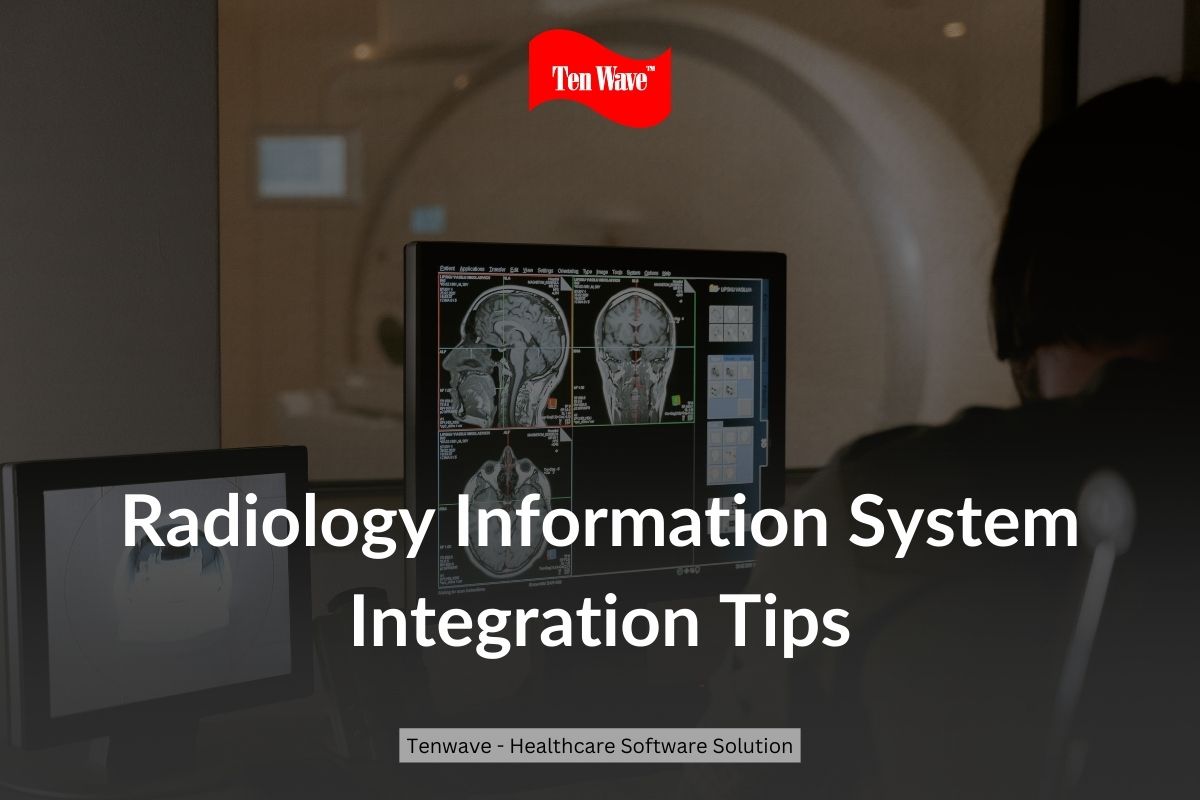Radiology Information Systems are a vital part of modern healthcare. They streamline the management and care of patients by simplifying radiological data. Integration of RIS into other healthcare systems can be a complicated but necessary process. We'll look at some key tips to ensure a seamless integration of RIS and the best possible patient outcomes.
Radiology Information Systems have become essential in the constantly developing landscape of healthcare technology. They are a great way to manage radiological data. Integration of RIS into other healthcare systems is a crucial aspect that offers healthcare providers a complete view of diagnostic and patient data.
Understanding Radiology Information System (RIS)
Definition and Components
RIS is a specialized system that manages radiological information, including patient data, images, reports, and imaging. RIS components include a registration system for patients, scheduling, image tracking, and reporting functionality.
Key Functionalities for Healthcare Providers
The RIS is used by healthcare providers for a variety of tasks, such as booking appointments, reporting results, and managing images. It is essential that these functions work seamlessly for effective patient care.
Challenges in RIS Integration
Interoperability Issues
Interoperability of RIS with current healthcare systems is a major challenge in RIS implementation. To ensure smooth data transfer, it is important to plan carefully for the diversity of systems in use across departments.
Data Security Concerns
The security of patient data is increasingly important as healthcare data moves to digital format. RIS integration should adhere to strict security standards to prevent potential breaches.
Importance of Seamless Integration
Enhancing Workflow Efficiency
The seamless integration of RIS enhanced workflow efficiency and effectiveness, allowing providers to have better access to radiological information. The overall accuracy and speed of diagnosis are improved.
Improving Patient Care and Diagnosis Accuracy
Integrated RIS facilitates comprehensive care for patients by providing a unified overview of all pertinent medical information. Diagnostic reports are more easily accessible, which leads to more timely and accurate diagnoses.
Choosing the Right Integration Solutions
Compatibility with Existing Systems
Healthcare providers should consider compatibility when integrating RIS. Compatible systems ensure a smooth and seamless transition without disrupting the daily operation.
Scalability for Future Needs
It is important to select an integration solution that can scale up in order to accommodate future technological advances and growth. Flexible systems can be adapted to the changing healthcare landscape.
Common Integration Mistakes to Avoid
Lack of Proper Planning
Insufficient planning is a common mistake before the process of integration. For success, it is essential to thoroughly analyze existing systems, identify potential challenges and develop a comprehensive plan.
Ignoring User Training
It is important to provide effective user training for a successful RIS. The healthcare staff must have the skills to use an integrated system. This will increase its usage and adoption.
Benefits of RIS Integration
Streamlined Data Access
Integrated RIS gives healthcare professionals centralized access, reducing manual data retrieval. This streamlines the decision-making process.
Enhanced Reporting Capabilities
RIS integration improves the reporting capability, allowing more accurate and detailed diagnostic reports. It also improves communication between healthcare professionals.
Best Practices for Successful Integration
Conducting Thorough System Analysis
It is essential to conduct a comprehensive analysis of the existing systems before integrating them. For a successful strategy of integration, it is important to understand the workflows, data dependency, and requirements of users.
Collaborative Approach with IT Teams
By involving IT teams in the entire integration process, you can foster collaboration while ensuring that all technical issues are effectively addressed. This collaborative approach enhances the smoothness of the transition.
Cost Considerations in RIS Integration
Initial Investment vs. Long-Term Gains
The initial cost of integrating RIS may appear high, but healthcare providers should consider long-term benefits in terms of efficiency, accuracy and patient care.
Identifying Hidden Costs
Budget planning is not only about the initial cost but also about hidden costs such as maintenance, upgrades, and training.
Future Trends in RIS Integration
Artificial Intelligence Applications
Artificial intelligence (AI), which is a new trend in RIS, promises advanced analytics for better diagnoses and will support decision-making.
Advancements in Imaging Technology
To maintain relevancy and effectiveness, RIS must be able to keep up with the rapid evolution of imaging technologies and new data sources.
User Experience and Feedback
Importance of User Input
Integration of RIS must take into account the user's experience. By obtaining input from the healthcare community, you can ensure that your integrated system will meet their requirements and improve their workflow.
Continuous Improvement Strategies
The implementation of feedback loops and strategies for continuous improvement based on the user's experience will foster ongoing improvements, keeping your integrated RIS in line with changing healthcare needs.
Regulatory Compliance and Security Measures
Meeting Industry Standards
RIS must integrate with industry standards. Standards are important for maintaining compliance and safeguarding patient data.
Safeguarding Patient Information
To protect patient data throughout the RIS Integration Process, robust security measures, including encryption and control of access, are required.
Ensuring Data Accuracy and Quality
Importance of Data Validation
In healthcare, the accuracy of data is crucial. Integrating RIS with rigorous data validation procedures ensures the reliability and accuracy of diagnostic information.
Strategies for Maintaining Data Integrity
Developing and implementing data integrity strategies ensures that an integrated RIS system delivers reliable and accurate information.
CONCLUSION
Radiology Information System Integration is multifaceted and requires collaboration, careful planning and careful consideration. By integrating RIS, healthcare providers can improve workflow efficiency, diagnostic accuracy, and patient care.
Tenwave Infotech - Best Healthcare IT company in India. We provide top Healthcare Software Solutions to improve healthcare industries. We are dedicated to transforming the healthcare management system with our healthcare IT services. Contact us Today!
FAQs (Frequently Asked Questions)
Q1: Is RIS integration suitable for all healthcare facilities?
A: RIS integration is beneficial to healthcare institutions of all sizes. Customization is important to ensure that the needs of every institution are met.
Q2: How long does the RIS integration process typically take?
A: The length of RIS Integration depends on both the existing system complexity and the integration solution chosen. It can take from a few weeks up to several months.
Q3: What measures are in place to ensure the security of patient information during integration?
A: Strict security measures are taken to protect patient data throughout the integration process, such as encryption and access control.
Q4: Can RIS integration be scaled as a healthcare facility grows?
A: Choosing a scalable solution allows healthcare facilities to be able to adjust to the growth of their facility and to changing technological requirements.
Q5: Are there ongoing costs associated with RIS integration?
A: After the initial expenditure, healthcare professionals must consider ongoing expenses like maintenance, updates and training to create an extensive budgetary analysis.
How Can We Help you?


